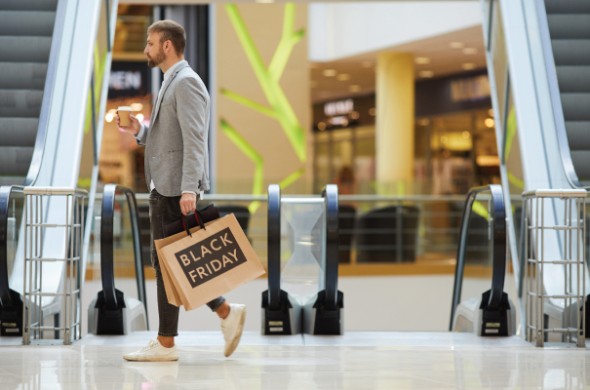The business landscape is constantly shifting as the world continues to adapt to the pandemic. In particular, the retail industry has experienced unique challenges that demand innovation.
Retail operators have been forced to adopt new technologies and strategies to meet customer demands. Many physical stores have shut their doors, digital stores are flourishing, and there’s an increased focus on omnichannel and multi-experience opportunities.
Customer expectations are at the heart of these changes and monitoring their behaviour is critical for growth. Let’s explore the shift in consumer behaviour in the Middle East, how it will impact the future of retail, and how businesses need to adapt.
The Pandemic’s Economic Impact on Consumers
The pandemic has pulled the rug from under the feet of the retail industry, causing all businesses to evolve - or dissolve.
A recent article on the retailer’s response to consumer shifts in the Middle East, written by one of our CPG consulting firm partners, highlights major developments. For example.
- Price sensitivity and cutting down on spending
- Less brand loyalty as customers switch to more affordable options
- Reliance on online shopping for convenience
- Demand for hygienic transparency during the pandemic
- The expectation for healthy preferences with known health benefits
- Preference for local production and supporting local businesses
- Increased focus on shopping for essentials
Even so, the Gulf Cooperation Council (GCC) luxury retail sector is showing signs of recovery. Consumers are preparing to shop and spend more again.
Is the retail industry positioned to meet their expectations?
How Has Customer Behaviour Changed?
Most consumers continue to be cautious of their spending. In Saudi Arabia, more than half of buyers expect the pandemic’s economic impact to remain prevalent for the next few months.
Instead of lavishing funds on non-essential items, the focus remains on food, groceries, medication, and health. Consumers are even willing to pay more for higher-quality items that promote health.
While physical stores are slowly opening up to vaccinated consumers, online shopping remains the preferred method of shopping.
During uncertain times, Total Experience (TX) has become the solution for retailers to adapt to customers’ expectations.
As a solution, TX offers a new approach to retail business strategy. Creating a superior shared experience, TX interlinks various concepts, such as;
- User experience (UX)
- Customer experience (CX)
- Multi-experience (MX)
- Employee experience (EX)
The shift involves taking care of customers, employees, and users - but how?
Strategies for Retailers to Meet Customer Expectations
A shift in consumer behavior and expectations demands a shift in retail strategy. Customer expectations are constantly evolving, and an adaptable strategy is important to keep up. The following actions are essential for omnichannel businesses.
Prioritize Seamless Digital Engagement
The GCC’s e-commerce market is expected to become a market worth almost $50 Bln by 2025. The increase in online shopping was largely driven by the COVID-19 pandemic. For retail businesses to survive, they need to double down on digital.
There are various strategies to support the effort, such as increasing investments in online acquisition. Without foot traffic, retailers rely on online acquisition to make sales. The online world is a competitive space, and online marketing strategies need to be prioritized.
A key factor to consider is the amplification of digital presence and engagement. The effort involves building mobile apps, engaging on social media, and nurturing online communities. Equally important to building a digital presence is a need for a smooth online experience.
Customers expect speed, convenience, and stability when engaging with online retailers. The competitive reality of online shopping means that customers won’t hesitate to move on to a competitor after a sub-par experience.
Adopt Innovation Into Omnichannel Retail Efforts
As an approach to sales, omnichannel efforts need to offer a seamless experience for all parties. Customer expectations are constantly shifting, and innovation is required to align with these expectations.
There are a few practical ways to seamlessly adopt innovation into retail efforts, such as;
- Incorporating online engagement techniques to introduce a personable, in-store feel to the digital experience
- Launching or diversifying existing delivery mechanisms to meet customer expectations
- Leveraging the potential of strategic partnerships to enhance customer convenience and boost sales
Focus on Hygiene and Safety
Physical safety is a top priority for consumers. The initial adjustment required for social distancing, sanitizing, doing temperature checks, and wearing masks has become the new normal.
Customers expect these safety measures to continue, and retailers need to meet these expectations. While the comeback of physical stores remains uncertain, focus can be placed on safe delivery methods.
Critically Assess Physical Network
There’s no guarantee that physical stores will make a complete comeback. While there’s a lot of value found in human connection, sampling sizes, and a personalized experience, it’s hard to beat the convenience of online shopping.
Retailers targeting an omnichannel approach should consider the role of both physical and online shopping experiences. In most instances, the role of the physical store needs to be redefined to optimize the network. For example, consider new formats and consider experiential retail options.
Adopt an Agile Operating Model
Retailers need to make an effort to adapt and evolve as needed. Remaining stagnant in the post-pandemic environment is a limiting strategy.
Make an effort to gain real-time insights on customer expectations. Translate these insights into an agile operating model that meets customer demands.
Streamline Customer Service
Customer service is an integral part of the online experience. Retailers need to prioritize customer service to ensure that they become return buyers.
Asking for feedback on purchases, ensuring timeous delivery, personalizing the shopping experience, making the checkout process flawless, and facilitate after-sales support are all key areas to focus on.



